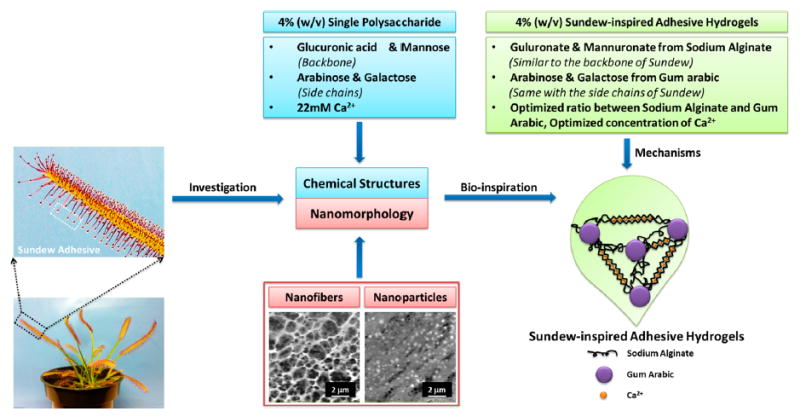Figure 1.

Schematic of the sundew-inspired adhesive hydrogels from chemical structures and nanomorphology of the natural sundew adhesive. The 4% (w/v) single polysaccharide of sundew adhesive is composed of glucuronic acid and mannose as the backbone, arabinose and galactose as the side chains, and 22 mM Ca2+. The scale bars in the AFM images of nanofibers and nanoparticles of the sundew adhesive are 2 μm. The concentrations of the sundew-inspired adhesive hydrogels are defined as 4% (w/v), which is identical to that of the sundew adhesive hydrogels and makes them an excellent candidate for tissue engineering and regenerative medicine. Sodium alginate and gum arabic are selected as the polysaccharides to construct the main structure of the sundew-inspired adhesive hydrogels. The two polysaccharides have analogical structures to the backbones and side chains of the sundew adhesive polysaccharide. The divalent cations such as Ca2+ not only involve in the assembly processes of the sundew-inspired hydrogels through egg-box structure but also act as the modulator for wound contraction and closure. The sundew-inspired adhesive hydrogels are synthesized through the optimization of ratios between sodium alginate and gum arabic and concentrations of Ca2+.
